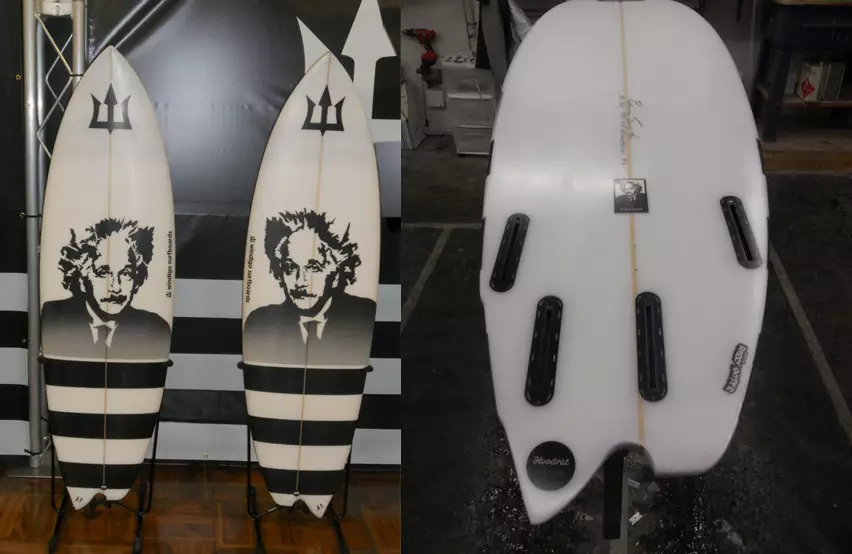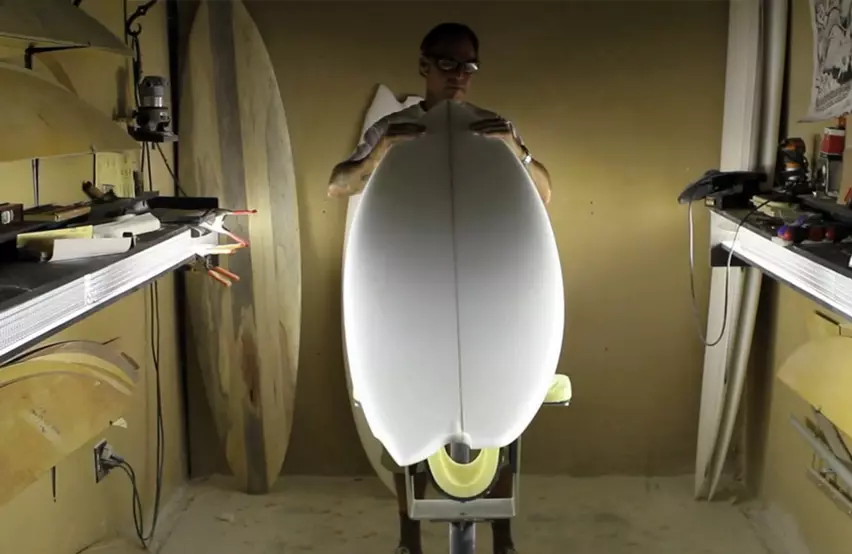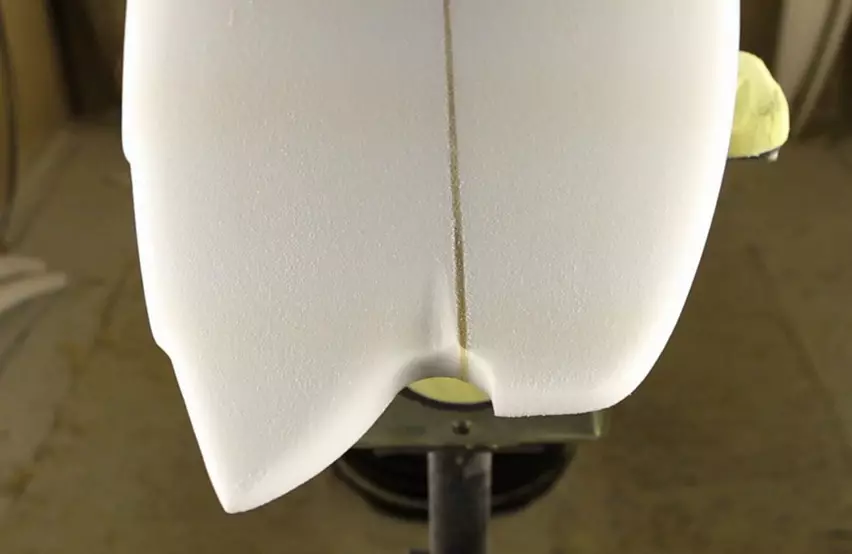This week we’re having a look at the Asymmetrical Einstein from Barry Snyder of Windigo Surfboards.
It’s an inarguable fact that you have to surf differently on your back and front sides. Your ankles just bend differently when you lean into your toes versus your heels and your body positioning changes going left or right. So it makes sense to have each railside cater to those appropriate differences.

Goofy and regular foot Asymm Einstein twins (left) and bottom of fin setup (right.)
The Asymmetrical Einstein does exactly that. Shaper Barry Snyder notes that most often, backside turns have much wider arcs than frontside turns- so the goal is to tighten the backside arc without losing speed down the line.
It’s basically 2 different surfboard templates married at the stringer. The front (or toe) side rail-line is longer by 3 to 4 inches than the back (or heel) side rail line, which is not only shorter but also has a bit more rocker to it and a curvier tail.

Barry Snyder in the shaping room with a goofy footer’s Einstein. Photo: Windigo Surfboards
The shorter rail-length on the heelside of the Asymmetrical Einstein gives a quicker feeling, and the increase in rocker allows you to pivot more sharply without having to apply as much pressure on your heels. This tightens the arc of your backhand bottom turns and helps you pull into your cutbacks faster.
Fin placement on the Asymmetrical Einstein is also asymmetrical. The backhand side is set up as a squash tail thruster, while the fronthand side is a swallowtail quad. This setup will allow you to apply natural and similar weight to both your heel and toe sides while gathering speed and without losing control.

Tail close-up of a goofy footed Asymmetrical Einstein. Photo: Windigo Surfboards
For more information, visit Barry Snyder and Windigo Surf.